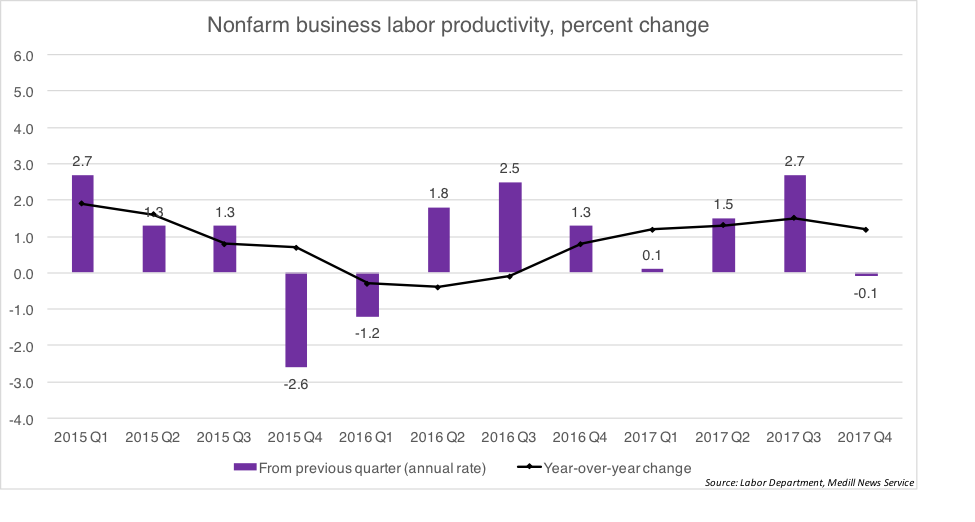WASHINGTON—U.S. worker productivity fell unexpectedly in the fourth quarter for the first time in almost two years, a warning sign that the economy may not be able to continue to grow at the 3 percent target rate that President Donald Trump set.
Nonfarm business-sector productivity decreased at a seasonally-adjusted annual pace of 0.1 percent during the last three months of 2017, according to a new report from the Labor Department released Thursday. That was well below Wall Street’s consensus expectations of 0.7 percent growth according to Bloomberg.
The report also revised third quarter productivity lower, to 2.7 percent growth from 3 percent.

Productivity is an economic measure of a worker’s output per hour on the job. Higher productivity, which is the result of improvements in workers’ skills or technological advances, means an economy is more efficient—able to accomplish more with less. Higher productivity can justify employers’ increasing wages.
This slowing productivity could make it more difficult for the United States to achieve its economic growth targets. The U.S. economy grew 2.6 percent in the fourth quarter of 2017 according to the Commerce Department’s quarterly report released last week. That came in below the 3 percent growth rate that Wall Street was expecting and President Trump said he was gunning for.
“To get 3% GDP growth when labor force growth is going to be less than 1 percent, you need 2 percent plus productivity growth. We’re still well short of that,” said Paul Ashworth, chief U.S. economist at Capital Economics, an independent macroeconomic research firm. “Also, if you reduce labor force growth by halving legal immigration, you need even faster productivity growth,” he added.
Incoming Federal Reserve Chair Jerome Powell also cited hitting productivity targets as one of the most important factors for the United States at a question-and-answer session he attended in the fall.
“I think we need to be doing those things that support higher growth — stronger workforce, higher productivity, balanced regulation,” Powell said. “That is the number one thing I am worried about.”
Productivity for the full year increased 1.2 percent after falling slightly in 2016, boosted by strong productivity growth in the middle of the year.
Unit labor costs in the nonfarm business sector rose 2.0 percent, driven by a 1.8 percent increase in hourly compensation. This is above the average unit labor cost increase of 1.3 percent over the last four quarters and above the 0.1 percent decline last quarter.
American worker productivity has slowed over the long-term. While the 2017 productivity increase was in line with the average growth rate of 1.2 percent per year over the last decade, it came in below the average annual increase of over 2 percent since 1947.

